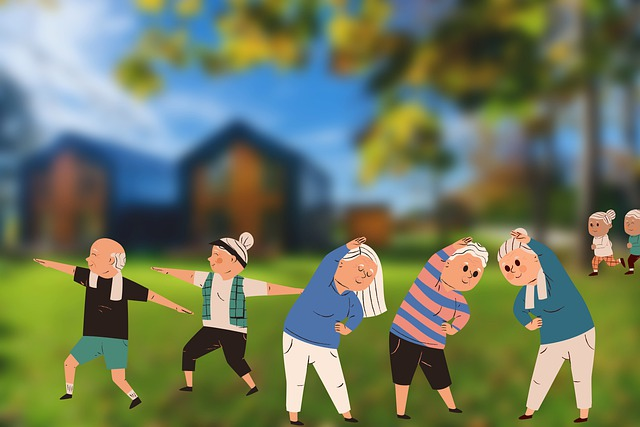Caring for a loved one can be a challenging and rewarding experience. But it can also be exhausting, both physically and emotionally. Caregivers need time to themselves to recharge and maintain their own mental health. Unfortunately, this is often difficult to do when you’re caring for someone else full-time.
What Activities Can Caregivers And Patients Do Together To Pass The Time And Improve Their Health Simultaneously
There are many family caregiver and professional caregiver and patient activities that can be done together in order to pass the time and improve their health simultaneously. Some of these activities might include walking, playing games like board games or tennis, or even simply having a conversation about shared interests.
One of the most beneficial activities for both caregivers and their patients is taking a walk through a park or around the neighborhood. Although this activity requires little effort from either party, it allows them both to enjoy some fresh air and get some much-needed exercise. Additionally, it provides an opportunity for open communication between caregiver and patient, which has benefits both physically and mentally.
Great physical activities to do with a caregiver or patient is playing sports or other physical games. Whether it’s going bowling, throwing a Frisbee at the park, or engaging in any other mildly competitive activity, these kinds of activities can be not only enjoyable but also great for promoting both mental and physical well-being. Beyond simply being fun, they give patients an outlet to release stress while also encouraging social interaction with others. So if you’re looking for ways to spend quality time with your loved one while at the same time improving your own health, be sure to consider some of these enjoyable activities because they could be a part of one of your loved one’s interests.
Personal Care Activities
There are many other activities that caregivers and older adults can do together to promote both physical and mental health. Personal care activities such as bathing, dressing, and grooming can not only help maintain hygiene and physical health, but can also be an opportunity for social interaction. For older adults with dementia and alzheimer’s disease, these activities can provide a sense of routine and familiarity.
Another type of simple activities are chair exercises where you can do different exercises while being in a chair like different arm and leg stretches which many seniors can do. It is also important to encourage older adults to focus on oral hygiene, as this can impact their overall health.
Finally, caregivers should encourage seniors to get involved in social activities, as this can help improve their social health, mental health and overall wellbeing. By engaging in these activities together, caregivers and older adults can promote both physical and mental health.
How Caregiver Activities Can Improve Patient Health
Caring for a loved one can be a rewarding experience, but it can also be physically and emotionally demanding. However, new research suggests that caregivers may actually enjoy some health benefits as well. A recent study found that caregivers who participated in regular activities such as walking, gardening, or even just socializing with friends had lower levels of inflammation than those who didn’t. Inflammation is a risk factor for many chronic diseases, including heart disease and diabetes. The study also found that caregivers who were more active had better cardiovascular health and higher levels of “good” HDL cholesterol.
These findings suggest that even simple caregiver activities can have a positive impact on patient health. So next time you’re feeling overwhelmed by your caregiving duties, take a deep breath and go for a walk—you may be doing more good than you realize.
Caregivers play a crucial role in supporting the mental health of their patients. Doing activities with patients can be part of caregiver duties. By engaging in activities and social interactions with dementia patients, caregivers can help to increase levels of neurotransmitters like dopamine and serotonin, which are responsible for regulating mood and motivation.
Additionally, caregivers often have to manage the daily needs of their patients, including assistance with limited mobility and tasks like bathing.
By understanding their patients’ needs and providing care that is considerate and tailored to their unique circumstances, caregivers can help to alleviate stress, anxiety, or other mental health issues that may be affecting their patients.
Ultimately, doing activities with patients can help to improve both caregivers’ own mental well-being as well as that of the people they are caring for, whether it be a family member, multiple family members or regular patients.
The Benefits Of Caregiver-Patient Interactions
Caregiver-patient interactions can play an important role in the health and wellbeing of patients of any age group. Research has shown that our interactions, both verbal and non-verbal, communicate crucial information to the brain, helping us to process new experiences and adjust our responses to them, and also provide healthy aging. Thus, when caregivers engage with patients on a personal level, they are able to positively influence the patient’s mental state, which can in turn impact physical health.
Additionally, caregiver-patient interactions help to strengthen the bond between caregiver and patient, creating a more harmonious care environment overall. Whether it is through massage therapy or simply spending time talking and interacting with a patient, caregivers can have a profound impact on their patients’ lives by fostering positive relationships.
Therefore, caregivers should seek out meaningful opportunities for connection with those in their care at all times. Not only will this benefit the patients themselves, but it will also result in better outcomes for everyone involved.
Examples Of Caregiver-patient Activities That Promote Positive Health Outcomes
There are many different ways in which a caregiver can engage with a patient to promote positive health outcomes. One example is encouraging regular physical activity, such as taking walks or engaging in light exercise. This can help to promote cardiovascular health, increase overall mobility, and reduce risk factors for chronic disease. Additionally, engaging in healthy eating habits together can be an effective way of supporting positive nutrition and diet. Setting dietary goals together, experimenting with new recipes, and tracking food intake can all help to ensure that each patient has the necessary resources for maintaining a healthy lifestyle.
Ultimately, by working collaboratively to address areas of concern and support positive health behaviors, caregivers and patients can boost their chances of long-term wellness.
Tips For Caregivers On How To Engage Patients In Activities
As a caregiver, it is important to find ways to engage your patients in activities that they enjoy. This can help to promote their physical and mental well-being. There are a few things to keep in mind when choosing activities for your patients.
First, consider their interests and abilities. It is important to choose activities that they will be able to participate in and that they will enjoy.
Second, make sure the activities are safe. You will want to avoid anything that could potentially injure your patients.
Finally, be prepared to adapt the activities as needed. Your patients may need assistance in some activities or may need to take breaks frequently. By keeping these things in mind, you can help to ensure that your patients have a positive experience and that they get the most out of the activities you choose for them.
Conclusion
Caregiver-patient interactions are crucial for the health and wellbeing of patients. By engaging with patients on a personal level, caregivers can positively influence the patient’s mental state, which in turn impacts physical health. There are many different ways in which a caregiver can engage with a patient to promote positive health outcomes, such as through regular physical activity, healthy eating habits, and supportive conversations.
Ultimately, by working collaboratively to address areas of concern and support positive health behaviors, caregivers and patients can boost their chances of long-term wellness.


























